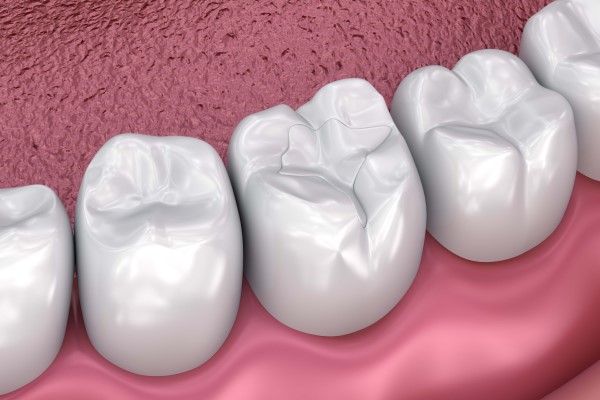Dental Restoration Options for Decayed Teeth

Patients who have decay might be looking for the right dental restoration option. There are several ones to choose from, including composite filling. Once you understand the options, you can make a more informed decision. Keep reading to find out more.
About composite fillings
One of the advantages of composite fillings is that the color is easy to match to the rest of the teeth. A composite is a great option to use with the front teeth. These could also be used for the more visible portions of the teeth. The filling can bond to the structure of the teeth, offering a greater degree of support.
Of course, composite fillings are also relatively versatile. That means the dental restoration is ideal for worn, chipped, or broken teeth. The dentist might not need to remove as much of the tooth when placing the filling either. Still, these may not be as durable as silver fillings, which can last 15 years or longer. That means the filling might not be right for a bigger cavity.
Less common types of fillings
One option is a ceramic filling, which is made from porcelain. It might last 15 years or longer, but it can be costly. However, it can resist stains well, retaining its hue. That makes it an attractive option.
Another type of filling is glass ionomer. It is made from glass and acrylic together. It is not that common if there is a need for a filling lower than the gumline. Plus, children often do not receive glass ionomer.
However, the material can release some fluoride, protecting the tooth from decay later on. Still, because of the glass, it is not as strong as composite resin fillings. Plus, it might fracture and can wear out over time. Newer types tend to last more, though, and in the right spot, it can last a long time.
Getting an indirect filling
These fillings are like composite fillings, but the dental lab will create them. Patients also need to have a couple of visits to have them placed, the same as with a crown. These are great for patients who do not have sufficient tooth structure for a traditional filling. However, the tooth might not yet be damaged enough to require a crown.
First, the dentist will remove any decay from the tooth. Then the dentist will take an impression of the area. Next, the dentist will place a temporary filling. Once the patient comes back, the dentist can place the permanent filling and see if it fits well. Patients might get an onlay or an inlay. An inlay goes inside the tooth while an onlay covers the cusps, or bumps, on the tooth.
Picking the right dental restoration for you
When it comes to decay in your mouth, you want to understand the dental restoration options. That way, you can make a more informed decision. With so many to pick from, there is a significant restoration out there for you. Your dentist can help you understand the options even better.
Request an appointment here: https://www.simplysmilesdentist.com or call Simply Smiles Dentistry at (520) 368-3351 for an appointment in our Tucson office.
Check out what others are saying about our dental services on Yelp: Dental Restorations in Tucson, AZ.
Related Posts
Getting a dental restoration is a way to repair teeth that are damaged, including chipped or cracked teeth, cavities, and worn-down enamel. There are different types of dental restorations available. The recommended restoration will depend on the type of tooth damage, the location of the tooth that is damaged, and the patient’s treatment preference. This…
Preventing tooth substance loss should be a priority if you are serious about keeping tooth decay at bay. Tooth decay is one of the most common health issues right next to a common cold, and it is easy to fall victim to it when a person fails to follow proper oral hygiene.Tooth decay can be…
A knocked-out tooth is not something to take lightly. If you do not preserve this tooth in the proper manner, your dentist will find it is difficult or even impossible to place it back in your mouth. Also, it is possible to save, knocked-out teeth, known as avulsed teeth. However, your actions (or lack thereof)…
A cavity is the unfortunate result of tooth decay. Tooth decay is largely due to the foods and beverages one consumes as well as one's oral health regimen. Exposure to fluoride in toothpaste and tap water along with genetics also play a role in determining the chances for dental cavities. While cavities are more likely…
